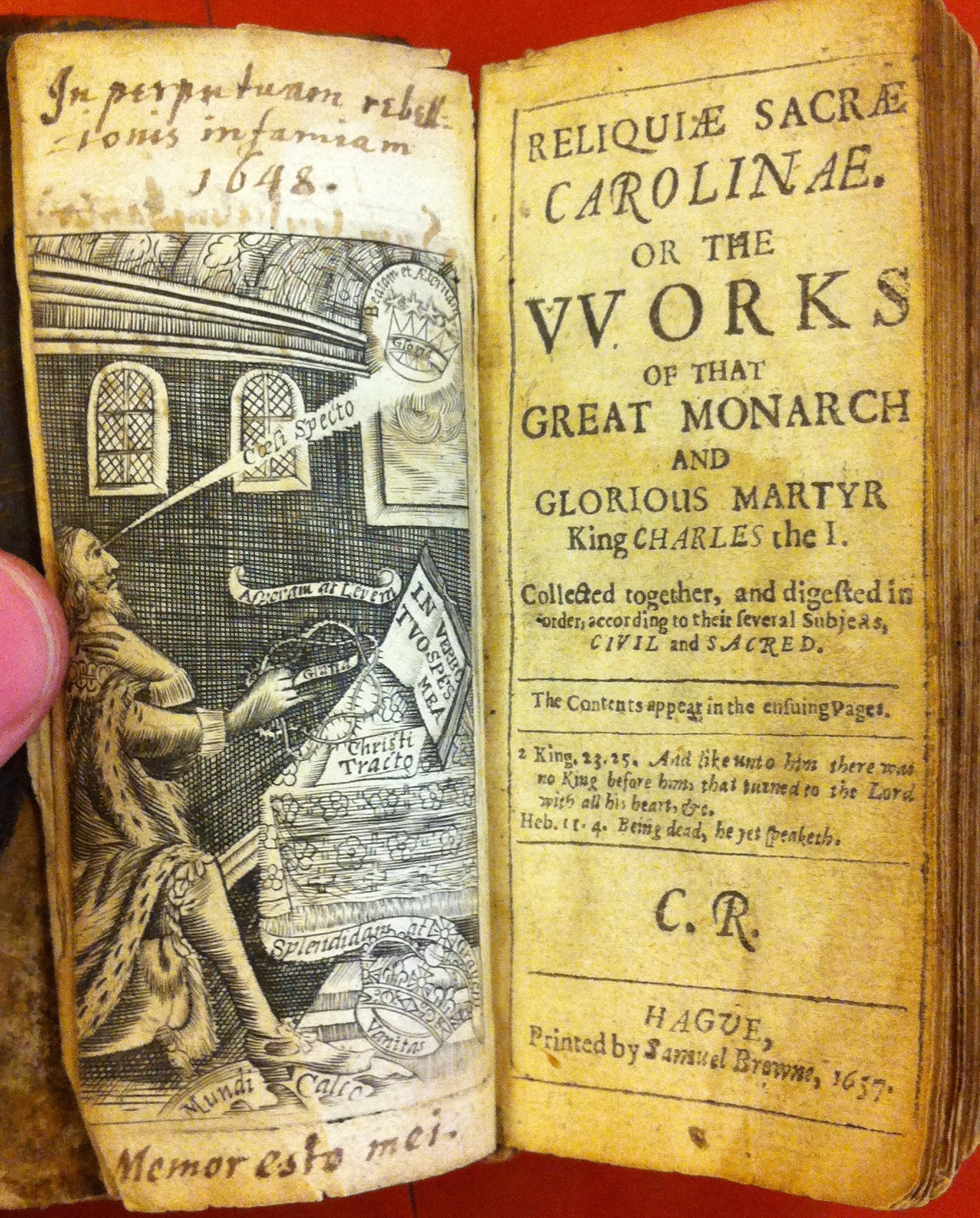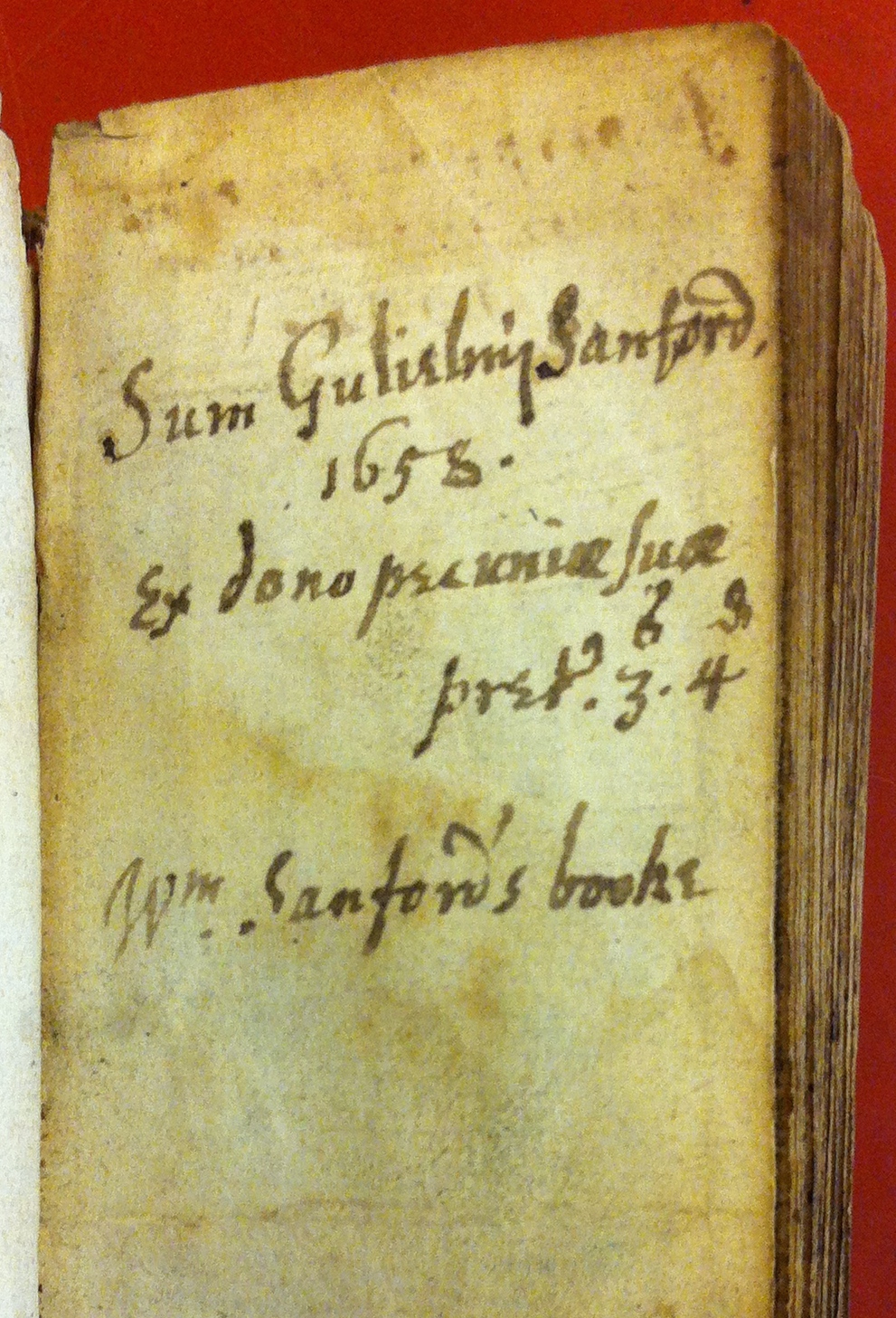 … this copy of the works of Charles I, a tiny little book now falling apart at the seams. It claims to have been printed in 1657 in the Hague by Samuel Browne, but in fact this is a false imprint and the book was really published in London. The reason for the duplicity is obvious–during the interregnum you were not supposed to be printing the Reliquiæ Sanctæ Carolinæ (the relics, or textual remains, of the holy Charles). To publish these writings, and in particular the Eikon Basilike or ‘Royal Portrait’ that supposedly set out the King’s pious responses to his tribulations during the 1640s, leading up to his execution, was an oppositional gesture. To own these works was oppositional, too, andthis copy comes with a handwritten inscription, ‘In perpetuam rebellionis infamiam / 1648’–‘Concerning the perpetual infamy of the rebellion’. (This looks like a parodic inversion of ‘Ad perpetuum rei memoriam’–‘as a perpetual remembrance of the matter’–a classical formula relating to things that deserved to be recorded forever).
… this copy of the works of Charles I, a tiny little book now falling apart at the seams. It claims to have been printed in 1657 in the Hague by Samuel Browne, but in fact this is a false imprint and the book was really published in London. The reason for the duplicity is obvious–during the interregnum you were not supposed to be printing the Reliquiæ Sanctæ Carolinæ (the relics, or textual remains, of the holy Charles). To publish these writings, and in particular the Eikon Basilike or ‘Royal Portrait’ that supposedly set out the King’s pious responses to his tribulations during the 1640s, leading up to his execution, was an oppositional gesture. To own these works was oppositional, too, andthis copy comes with a handwritten inscription, ‘In perpetuam rebellionis infamiam / 1648’–‘Concerning the perpetual infamy of the rebellion’. (This looks like a parodic inversion of ‘Ad perpetuum rei memoriam’–‘as a perpetual remembrance of the matter’–a classical formula relating to things that deserved to be recorded forever).
 What I really like about this copy, though, is the mark of ownership. On a flyleaf, the book declares itself the property of one William Sanford, 1658. Then it adds ‘Ex dono pecuniæ suæ / Pretium 3s 4d’–‘The gift of his own money / Price 3 shillings 4 pence’. People routinely gave books as presents in this period, and recorded these acts of generosity in ‘ex dono’ inscriptions, often with flowery adjectives describing the firm friendship between giver and recipient. This purchaser says the book was the gift not of a friend but of his purse. Was he disgruntled? Or was he proud?
What I really like about this copy, though, is the mark of ownership. On a flyleaf, the book declares itself the property of one William Sanford, 1658. Then it adds ‘Ex dono pecuniæ suæ / Pretium 3s 4d’–‘The gift of his own money / Price 3 shillings 4 pence’. People routinely gave books as presents in this period, and recorded these acts of generosity in ‘ex dono’ inscriptions, often with flowery adjectives describing the firm friendship between giver and recipient. This purchaser says the book was the gift not of a friend but of his purse. Was he disgruntled? Or was he proud?